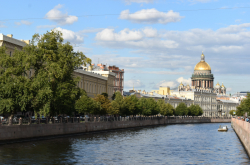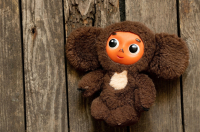Science Nobels. Two years ago, physicists detected for the first time the infinitesimal ripples in space called gravitational waves caused by the merger of two black holes. This observation fulfilled a century-old prediction from Albert Einstein and opened up a whole new way to explore the heavens.
This week, three leaders of the massive experiment that made the discovery received the Nobel Prize in Physics.
The Physiology or Medicine Prize recognized work on how several genes work together to control the basic circadian clock, encoding proteins that build up during the night and are broken down during the day.
And three pioneers of a technique called cryo–electron microscopy won the Nobel Prize in Chemistry. The technique helped visualize biomolecules—everything from the needles that bacteria use to attack cells to the structure of Zika virus—with unprecedented detail.
DNA – hot material for photonics? Using DNA from salmon, researchers in South Korea hope to make better biomedical and other photonic devices based on organic thin films. Often used in cancer treatments and health monitoring, thin films have all the capabilities of silicon-based devices with the possible added advantage of being more compatible with living tissue.
New telescope attachment for exploring new worlds. A new, low-cost attachment to telescopes allows previously unachievable precision in ground-based observations of exoplanets -- planets beyond our solar system. With the new attachment, ground-based telescopes can produce measurements of light intensity that rival the highest quality photometric observations from space.
Smart bandage to promote fast healing. Researchers from the University of Nebraska-Lincoln, Harvard Medical School and MIT have designed a smart bandage that could eventually heal chronic wounds or battlefield injuries with every fiber of its being. The bandage consists of electrically conductive fibers coated in a gel that can be individually loaded with infection-fighting antibiotics, tissue-regenerating growth factors, painkillers or other medications.
New textile keeps itself clean. Scientists have developed a novel weapon in the battle against deadly hospital-acquired infections - a textile that disinfects itself, which can reduce bacteria levels by more than 90 per cent. By incorporating the specially-engineered textile – Surfaceskins - in a device designed to be used on hospital doors instead of the traditional aluminium door plate, that part of the door that people push to open it - they aim to bolster hand hygiene.




